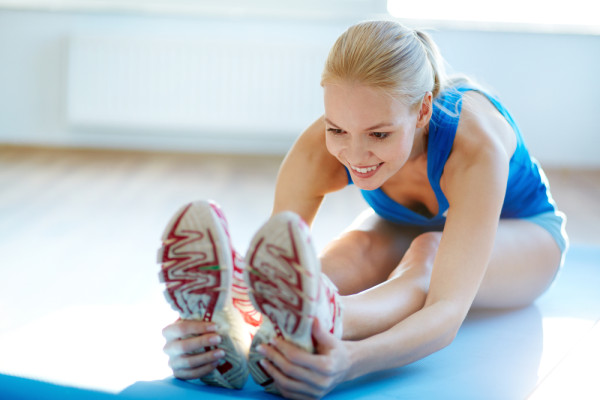Flexibility is often overlooked, but it’s one of the most important areas to focus on while increasing your level of physical fitness. After all, it’s been among the benchmarks for measuring fitness on the Presidential Physical Fitness Test for years! Having good flexibility is beneficial to the mind and body alike and can help prevent injuries, improve posture and range of motion in our joints, and increase overall physical fitness, just to name a few.
When you think of flexibility, stretching is probably the first thing that comes to mind. And, unfortunately, stretching seems to be thing that that so many of us focus the least amount of attention on in our workouts. Warming-up and cooling-down properly before and after exercise are very important and aid in better flexibility, but it can also be focused on during a workout.
Here are four ways that you can gain more flexibility in 2024:
1. Stretch properly after exercise
Think about how hard your body works during a high intensity workout. You can’t expect to just return back to your “normal state” after you’ve been pushing your muscles to the limit for a specific amount of time. Exercise is a form of stress to the body, and stretching can help calm it down. So many of us exit the gym as soon as our workout is done or spend just a few seconds stretching each muscle.
Taking time to perform static stretches after your muscles have been adequately warmed up will greatly reduce the risk of injury. (Make sure you don’t do static stretching before a workout—that can actually cause injuries.) Be sure to hold each stretch for about 30 seconds before moving on to the next. After the first 15 seconds you should be able to go a little deeper into the stretch. Take long deep breaths and try to relax as you stretch all of the major muscle groups, focusing more on those that feel tighter.
2. Myofascial Release Massage
Myofascial Release (MFR) is another form of stretching, but it can be performed during any time of day (including before and after exercise). MFR gets deep into the muscles and connective tissues by applying pressure on them directly. This type of stretching is often performed my a massage therapist, who may also incorporate deep (static) stretches that can feel pretty intense. It can also be done on your own with the aid of a foam roller, tennis ball, or The Stick, a handheld massage tool. This type of flexibility training can be a little bit painful, but it will definitely leave you feeling great afterward!
3. Yoga
If you’ve ever taken a yoga class, you’ll probably remember how that very first class made you fully aware of just how inflexible you are. Yoga brings attention to imbalances in our bodies and helps us correct them. Breathing is one of the most important aspects of yoga and the mind-body practice teaches us to be aware of our breath. Focusing on deep, controlled breathing allows you to concentrate on what you are doing and stretching out your muscles.
Yogic stretching can also help reduce the build up of lactic acid in muscles, which contributes to muscular fatigue and injury. If you make a habit of practicing yoga, it will only take a short amount of time to notice major improvements in your flexibility!
4. Spend Some Time in a Sauna
Yes, you read that correctly—spending time in an infrared sauna can actually help increase your flexibility! A recent study conducted at Auburn University had twelve participants perform various hamstring and lower back stretches in a room with a temperature set to 70 degrees. The subjects then rested in either the Sunlighten Pulse Full Spectrum Sauna (with the machine set to the detoxification setting) or in the training room at 70 degrees. Afterwards, they stretched for ten minutes. The subjects that stretched in the training room experienced mild benefits from the stretches, but those in the sauna saw up to a 205% in their range of motion, an increase that would normally take weeks of traditional stretching to achieve. The idea behind this method is that as your core body temperature rises, your muscles are able to stretch deeper and more freely and your body becomes much more flexible .
Also Read:
Every Runner Should Be Foam Rolling: 5 Moves to Help You Get Started
Experts Agree, Sitting in a Sunlighten Sauna Offers Vast Health and Weight Loss Benefits

